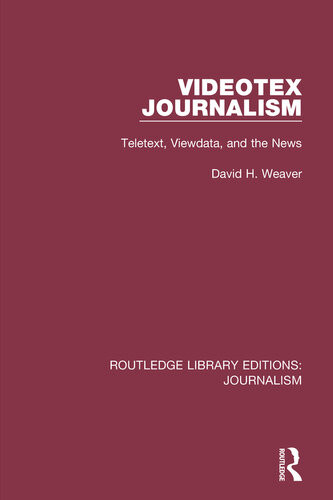

Most ebook files are in PDF format, so you can easily read them using various software such as Foxit Reader or directly on the Google Chrome browser.
Some ebook files are released by publishers in other formats such as .awz, .mobi, .epub, .fb2, etc. You may need to install specific software to read these formats on mobile/PC, such as Calibre.
Please read the tutorial at this link: https://ebookbell.com/faq
We offer FREE conversion to the popular formats you request; however, this may take some time. Therefore, right after payment, please email us, and we will try to provide the service as quickly as possible.
For some exceptional file formats or broken links (if any), please refrain from opening any disputes. Instead, email us first, and we will try to assist within a maximum of 6 hours.
EbookBell Team

0.0
0 reviewsOriginally published in 1983. Videotex technology (the capacity to deliver computer-stored textual information and graphics electronically to the home television screen) was becoming widespread in the 1980s. This book looks at how this affected journalists and other news media and how the flow of news existed in society at the time.
Based on observations and interviews with journalists, the book addresses technological, political and economic questions as well as provides a concise description of teletext and viewdata systems in various countries. The findings presented offer a fascinating view of the opinions and actions of journalists working in the 1980s, not only on teletext systems. For example questionnaire results are presented on how journalists saw the role of their job and what actions they felt appropriate, such as hidden cameras and phone taps. These issues of greater visibility in the 21st Century, make this a fascinating look at the history.